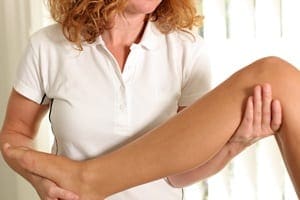statFor some women, it's about making an elegantement at special events or being a couple…

Why Do Ligament and Tendon Injuries Take So Long to Heal?
 Ligament and tendon both play an important role in the stability and function of the musculoskeletal system. The tendon connects muscles to bones while ligaments connect bones to other bones. Both are made of fibrous connective tissue that is relatively inelastic. Unlike muscle tissue, fibrous connective tissue does not have a significant blood supply to bring necessary fluid and nutrients to the site of an injury. Unfortunately, these nutrients are still essential for repairing the damage.
Ligament and tendon both play an important role in the stability and function of the musculoskeletal system. The tendon connects muscles to bones while ligaments connect bones to other bones. Both are made of fibrous connective tissue that is relatively inelastic. Unlike muscle tissue, fibrous connective tissue does not have a significant blood supply to bring necessary fluid and nutrients to the site of an injury. Unfortunately, these nutrients are still essential for repairing the damage.
The Knee is a Common Site for Injuries
The knee is the body’s largest joint and it is made up of both tendons and ligaments. Four ligaments are in the knee, forming a strong support to hold together the bones and provide stability. There are two tendons connected to the joint with the quadriceps connecting thigh muscles to the knee cap and the patellar tendon stretching between the knee cap and the shin.
Sprains and tears are among the most common types of injuries to the knee, along with soft tissue tears. Injuries occur to the ligaments when the knee is twisted beyond the joint’s normal range-of-motion, often as a result of a sports accident. Tendons are often injured when they are stretched and torn while running, jumping or from an impact to the front of the knee.
Treating Serious Injuries to Tendons and Ligaments
Due to the lack of nutrients available to ligaments and tendons, surgery can often be required to restore full function to the joint. Arthroscopic surgery provides surgeons with a less invasive method of repairing the damaged tissue by working with small instruments through small incisions. But what about less serious types of injuries?
A Replacement for RICE?
For many, many years, that standards advice given to individuals who have suffered a knee injury has always been to follow the RICE system:
R – Rest
I – Ice
C – Compress
E – Elevate
However, some researchers and clinicians are suggesting another approach called MEAT, or Movement, Exercise, Analgesics and Treatment. Some studies have indicated that the RICE method can cause further damage to already injured ligaments and tendons. Some professionals who have reviewed this work now believe that any treatment that reduces inflammation or interferes with the body’s own response to the trauma will delay healing by further limiting blood flow, including the application of ice. Their view is that inflammation actually aids in the recovery of muscle cells and also helps to regenerate soft tissue. Immune cells release insulin-like growth factor into damaged tissue which aids in healing. When athletes or others with injuries to ligaments or tendons apply ice or take NSAIDs to decrease inflammation, they interfere with the body’s natural action and prevent healing from occurring.
Chiropractic physicians are experts in diagnosing and treating a wide range of acute injuries and chronic health conditions that affect the musculoskeletal and nervous systems. So if you’ve recently suffered a soft-tissue injury, we can design a treatment plan that will help you heal as quickly and completely as possible, getting you out of pain and back to your active lifestyle. Call or visit our office today!




